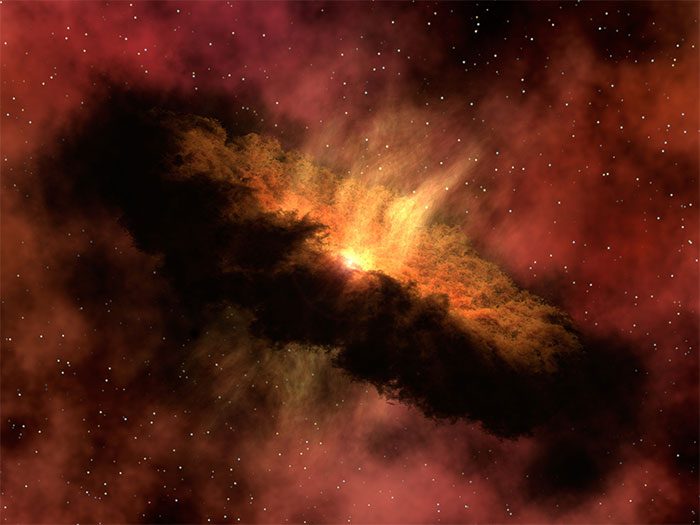Some frigid meteorites that fell to Earth have helped scientists rediscover the original shape of the Solar System. This is a shocking result.
A research team led by planetary scientist Bidong Zhang from the University of California, Los Angeles (UCLA) analyzed iron meteorites from the far reaches of the Solar System, uncovering the mystery of the “cradle” where Earth was born.
Around young stars—including our Sun 4.6 billion years ago—was a massive protoplanetary disk.
This disk was filled with gas and dust, where protoplanets formed, collided, shattered, and gradually coalesced into larger bodies, eventually stabilizing into the planets we know today, including Earth.

A graphic depiction of a young star with an unusually thick protoplanetary disk, which scientists believe the early Solar System possessed – (Image: NASA)
Previously, descriptions of the Solar System’s protoplanetary disk were based on observations from a few young star systems that humanity could faintly access through telescopes.
From there, this disk was characterized as a thin, flat, enormous cloud of gas and dust.
However, the iron meteorites that Dr. Zhang’s team analyzed tell a different story.
According to a study published in the journal Proceedings of the National Academy of Sciences, these are rock fragments that have traveled a long distance to Earth from the outer regions of the Solar System, specifically the area beyond Jupiter’s orbit, which is dominated by massive gas planets.
These meteorites are richer in refractory metals than those found in the inner Solar System, which is home to Mercury, Venus, Earth, and Mars.
The analysis of their composition indicates that these meteorites could only have formed in a very hot environment, such as one close to a forming star.
This means they were initially formed in the inner Solar System and then gradually moved outward.
However, there is one obstacle: If the Sun’s protoplanetary disk was like the disks we have seen around other young stars, there would be many gaps. When planets begin to form, they transform the disk into a structure with multiple concentric rings, with each gap being a location where gas and dust coalesce to form planets.
The aforementioned meteorites could not have traversed those gaps. There is only one possibility: The Sun’s protoplanetary disk must have been different.
According to models, the migration of this type of meteorite would occur most easily if the protoplanetary structure were toroidal, resembling a donut.
This would push metallic objects towards the outer edge of the forming Solar System.
Only later, as the protoplanetary disk cooled, did it begin to flatten. This was also when Jupiter—the first and largest planet—had relatively formed, creating a large gap that prevented metals like iridium and platinum from moving inward.
At that point, these metals were brought into meteorites that had already ventured outward. These meteorites were also trapped in this frigid region due to the presence of the large planets.
Nevertheless, some of them managed to find their way to land on Earth.


















































